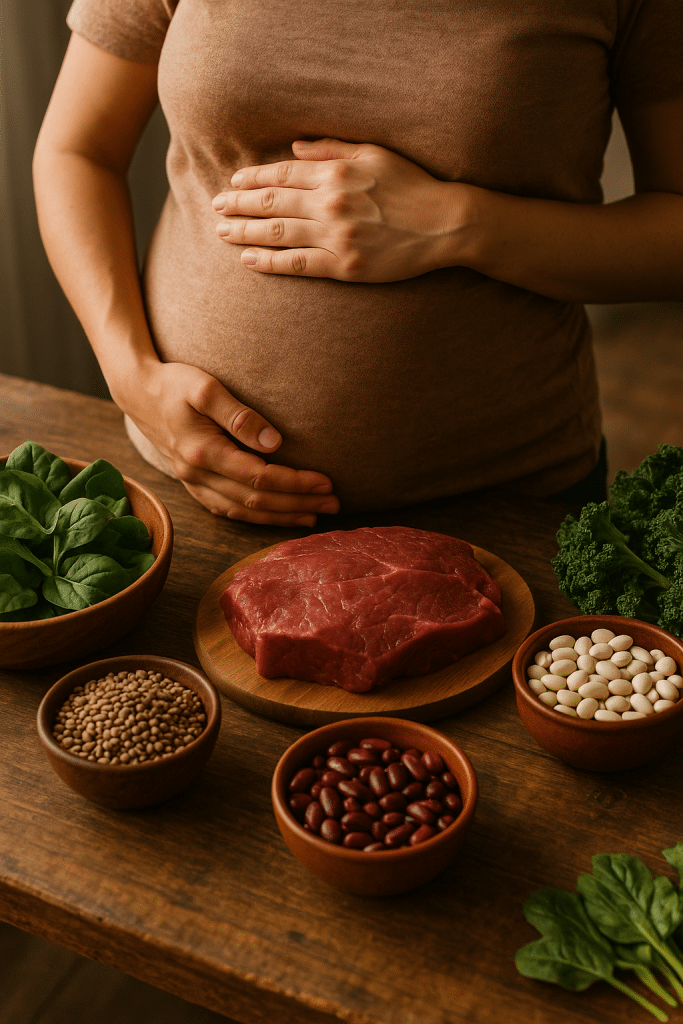Pregnancy is a beautiful journey, but it also brings unique nutritional demands, particularly an increased need for iron. Iron is vital for both you and your developing baby—it supports healthy blood production and helps prevent pregnancy anemia, a common concern among expectant mothers. If you’ve been wondering about iron rich foods for pregnancy, you’re in the right place. In this comprehensive guide, I’ll walk you through six essential iron-packed foods tailored to support your maternal health and fetal development.
From ocean treasures like fresh littleneck clams and Blue Point oysters to leafy greens like organic baby spinach, plus nutrient-fortified cereals, grass-fed sirloin steak, and organic roasted kidney beans, I’ll share detailed insights on why these foods are so beneficial during pregnancy. I’ll also dive into how to enhance iron absorption naturally, safety tips for seafood, and practical ways to incorporate these power foods into your daily diet. So, whether you’re aiming to boost your iron intake naturally or looking to complement supplements with nutrient-rich meals, this article will serve as your trusted roadmap in navigating iron rich foods for pregnancy.
The Importance of Iron During Pregnancy
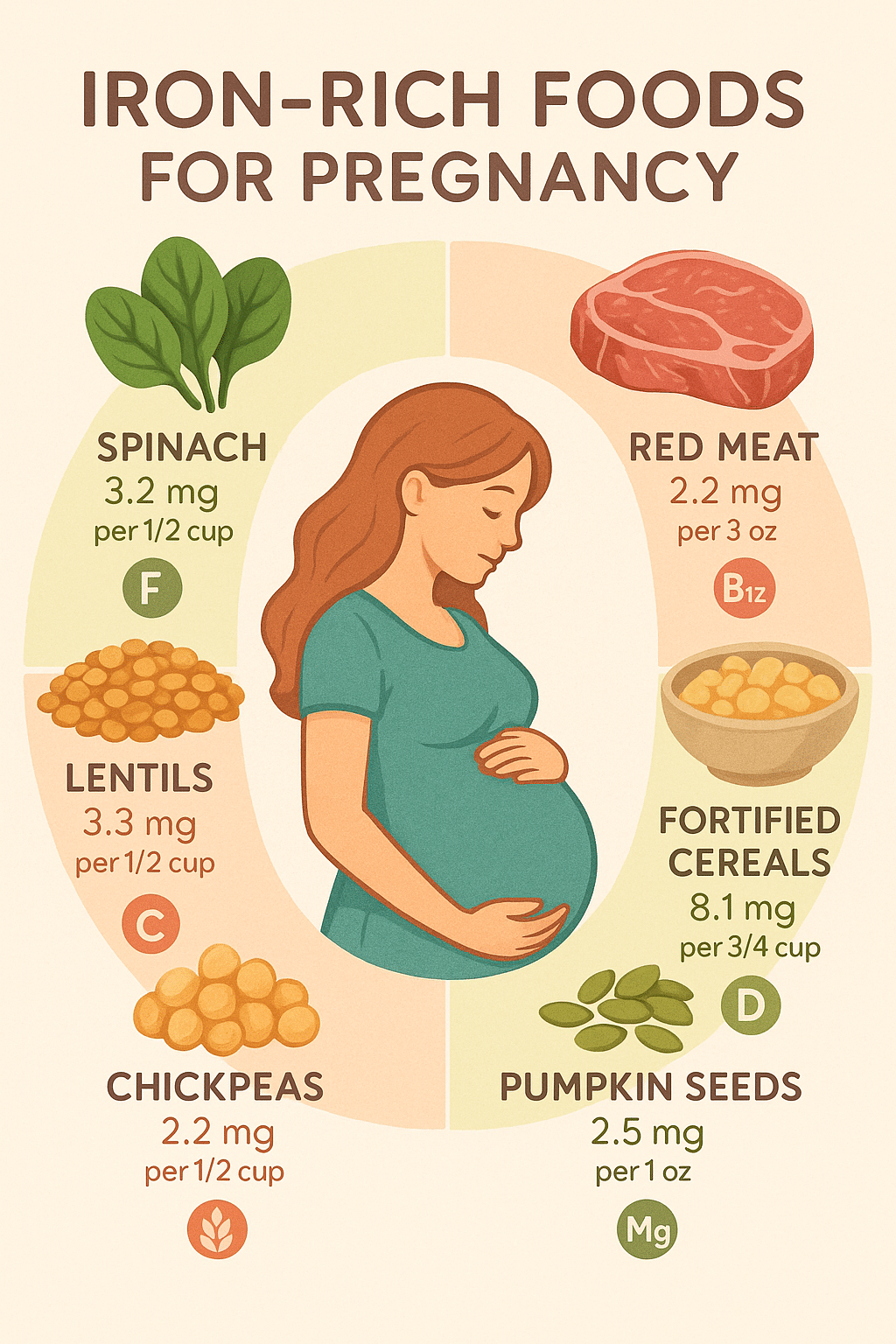
How Iron Supports Maternal and Fetal Health
Iron plays a starring role during pregnancy, but its importance might not be obvious at first. As your body adapts to support a growing baby, your blood volume increases by nearly 50%. That means you need more iron to produce additional hemoglobin—the protein in red blood cells that carries oxygen throughout your body and to your baby.
Without enough iron, you run the risk of iron deficiency anemia, which can make you feel fatigued, dizzy, and even compromise your baby’s growth and cognitive development. Studies show that adequate iron intake supports the formation of your baby’s brain and muscles and reduces the likelihood of preterm birth and low birth weight. My own experience with clients reveals that maintaining a balanced iron level dramatically improves energy and vitality during pregnancy.
Understanding Heme and Non-Heme Iron Sources
Iron comes in two forms: heme and non-heme. Heme iron, found in animal-based foods like beef and shellfish, is absorbed more efficiently—up to 15-35%—compared to non-heme iron from plants, which absorbs at a rate of around 2-20%. Despite this, non-heme iron remains crucial, especially for vegetarians or those seeking plant-based options. Pairing non-heme iron foods with vitamin C-rich items boosts absorption significantly.
Knowing this difference guides your dietary choices effectively. For example, combining organic baby spinach (a non-heme iron source) with a squeeze of fresh lemon in your salad is simple yet impactful.
Fresh Littleneck Clams: Nutrient Powerhouse for Pregnancy
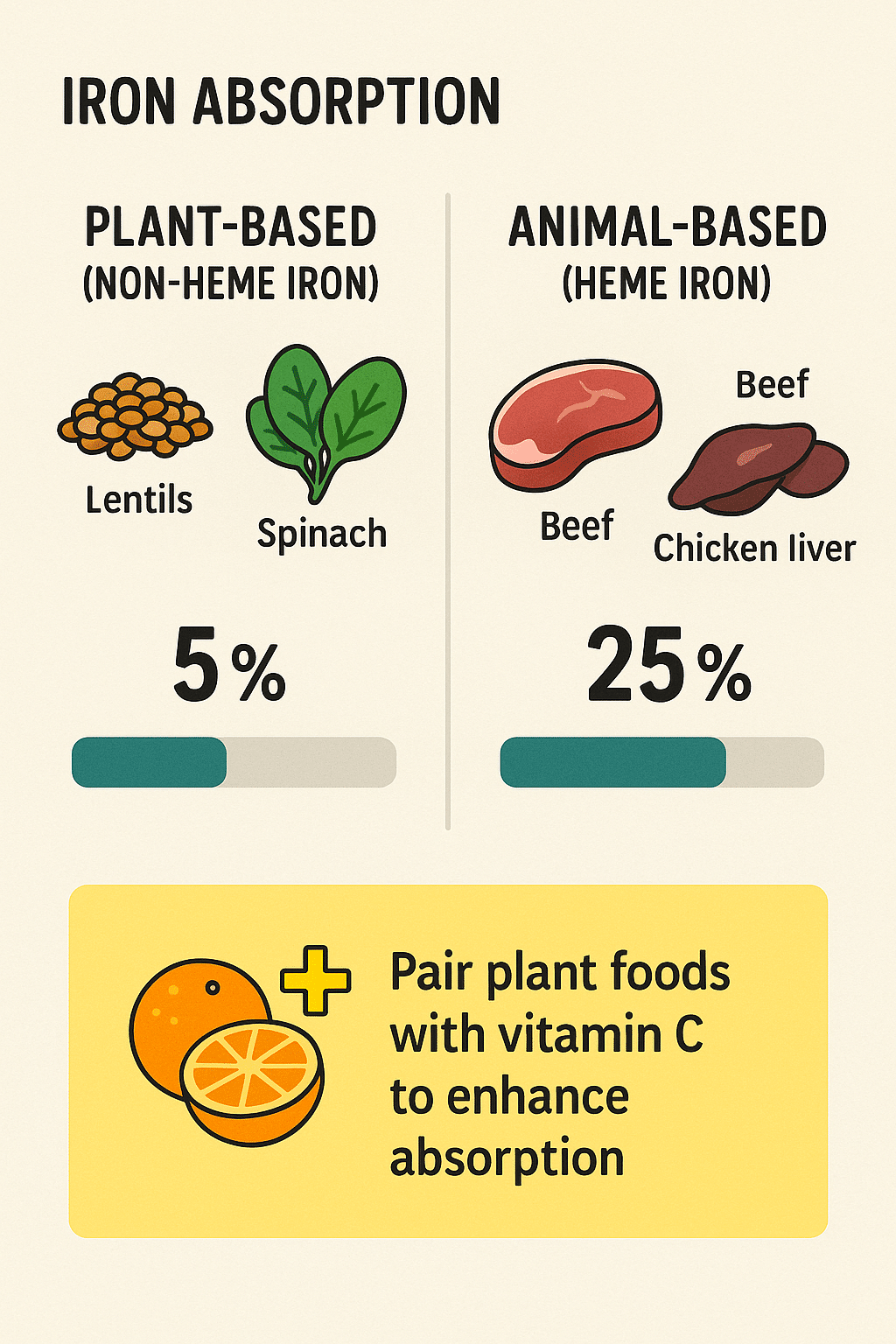
Iron Content and Additional Benefits of Littleneck Clams
Fresh littleneck clams are among the most iron-rich foods available, offering approximately 24 mg of iron per 3-ounce serving—well above the recommended daily iron intake for pregnant women (about 27 mg daily). Beyond iron, they’re loaded with vitamin B12, zinc, and omega-3 fatty acids, which support brain development and immune health.
Clams’ mild sweetness and tender texture make them a delightful addition to your pregnancy diet while helping combat pregnancy anemia and fatigue.
Tips for Selecting and Safely Consuming Clams During Pregnancy
Safety is paramount when including seafood during pregnancy. Choose clams that are freshly harvested and properly refrigerated. Look for closed shells; open or cracked ones should be discarded as they may harbor bacteria. Always cook clams thoroughly—steaming or boiling until shells open is best—to eliminate harmful pathogens.
Pregnant women should limit seafood to 2-3 servings per week and avoid raw or undercooked shellfish to reduce the risk of foodborne illness.
Where to Buy Fresh Littleneck Clams: Trusted Sources
You can find fresh littleneck clams from reputable seafood purveyors such as:
- Tres Islas Seafood — Offers weekly deliveries of fresh littleneck clams.
- Madison Seafood — Sourced from Washington waters, known for quality.
- The Fresh Grocer — Local wild-caught clams.
- Hopkins Seafood — Fresh for steaming or grilling.
- Alan’s Market — Sold by unit.
- Maine Lobster Now — Responsibly harvested New England clams.
When buying, check for freshness and plan to consume within one to two days for optimal taste and safety.
Blue Point Oysters: A Classic Iron-Rich Seafood Option
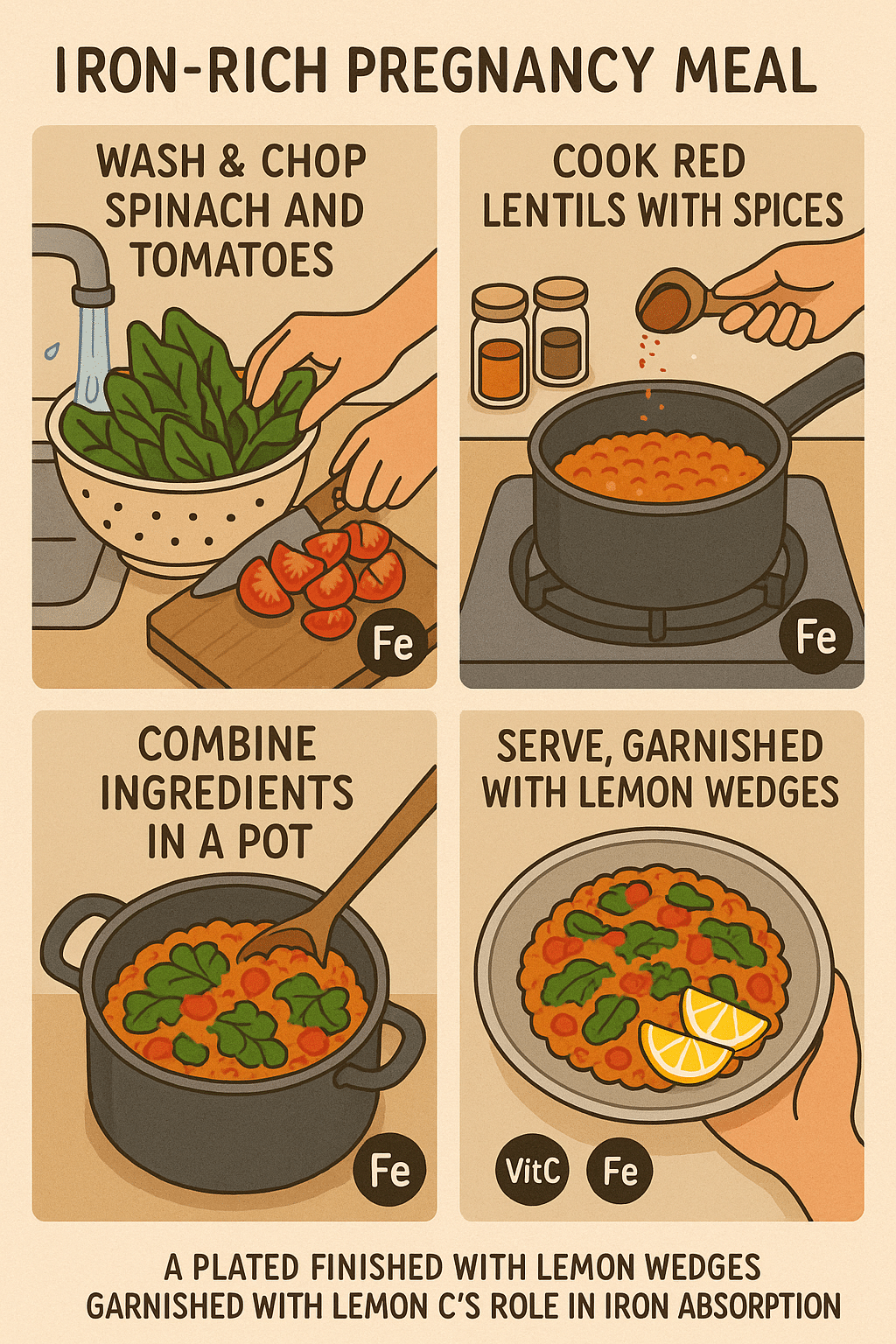
Nutritional Profile and Pregnancy Benefits of Blue Point Oysters
Blue Point oysters provide around 8 mg of iron per 3-ounce serving, making them a potent shellfish choice for pregnancy. They also contain significant zinc, vitamin B12, and essential fatty acids, all crucial for fetal immune system development and cognitive growth.
Their firm texture with a pleasantly briny flavor delights seafood enthusiasts while supporting your increased iron requirement.
Safe Consumption Guidelines and Purchasing Tips
Pregnancy dietary guidelines recommend consuming cooked oysters only—raw or undercooked oysters pose a risk of harmful bacteria such as Vibrio. Grilling, baking, or steaming Blue Point oysters until their edges curl and juices bubble is safest.
Stick to moderate intake—2-3 servings of low-mercury seafood weekly is usually advised—and always source oysters from trusted suppliers to ensure freshness.
Recommended Retailers for Fresh Blue Point Oysters
Consider purchasing from these reputable retailers:
- Toasted Oysters — Dedicated to Great South Bay harvests.
- The Crab Depot — Fresh oysters delivered to your door.
- Santa Barbara Fish Market — Known for premium seafood.
- Madison Seafood — Local Long Island Sound sources.
- Neptune Fish Market — Florida-based fresh oyster options.
- H&H Fresh Fish — West Coast purveyor with excellent reviews.
Organic Baby Spinach: Plant-Based Iron and Beyond
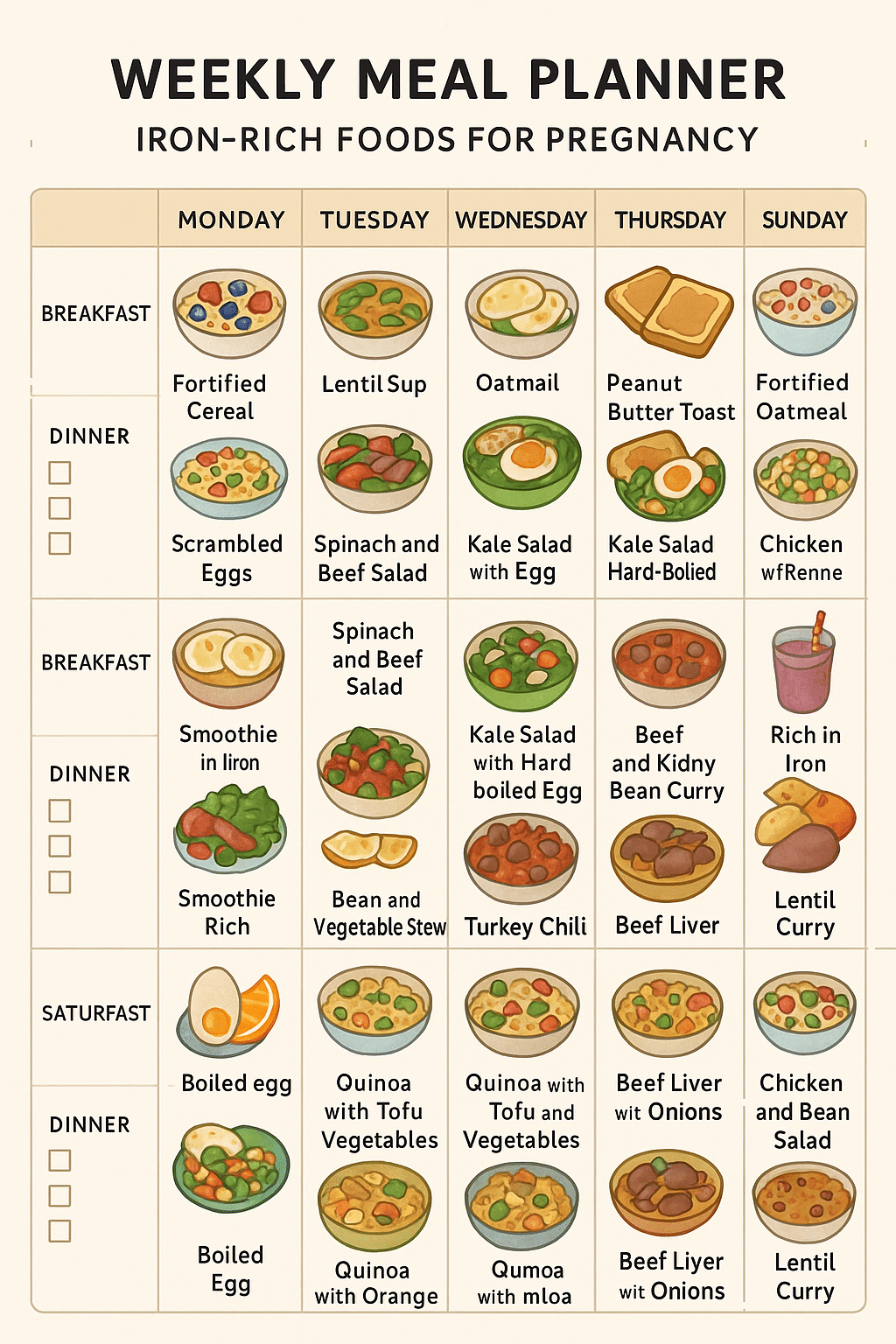
Iron and Key Micronutrients in Organic Baby Spinach
Organic baby spinach is an excellent non-heme iron source, providing roughly 0.8 mg per cup raw, alongside generous amounts of vitamin C (enhances iron absorption), folate (vital for neural tube development), and vitamins A and K. It’s also rich in antioxidants and dietary fiber, supporting overall maternal health and digestion.
The USDA organic label ensures it’s grown without synthetic pesticides or fertilizers, aligning with the health-conscious values many moms-to-be cherish.
Delicious Ways to Incorporate Baby Spinach into Your Pregnancy Diet
- Salads: Toss with sliced strawberries, walnuts, feta, and a citrus vinaigrette for a refreshing, iron-boosted meal.
- Smoothies: Blend a handful with banana, orange juice, and frozen berries for a nutrient-packed start.
- Cooked Dishes: Add spinach to pasta sauces, omelets, stir-fries, or sauté lightly with garlic as a side.
Vitamin C-rich foods like bell peppers, tomatoes, or lemon juice can be added to enhance iron uptake from spinach.
Best Places to Purchase Fresh, Organic Baby Spinach
Look for these trusted options carrying fresh organic baby spinach:
- Marketside Organic Baby Spinach (Walmart)
- 365 by Whole Foods Market on Amazon
- Fresh Express Organic Baby Spinach
- Earthbound Farm Organic Baby Spinach
- Good & Gather Organic Baby Spinach (Target)
Kellogg’s Special K Iron-Fortified Cereal: Convenient Iron Boost
How Fortified Cereals Complement Natural Iron Sources
For busy moms-to-be, fortified cereals like Kellogg’s Special K offer a reliable and convenient iron source—typically providing 18 mg per serving (equivalent to 100% daily value). This cereal also has added B vitamins and fiber, supporting energy metabolism and digestion during pregnancy.
When combined with a glass of orange juice or fresh fruit, the vitamin C content helps optimize iron absorption from the fortified cereal.
Balancing Iron Intake with Vitamin C for Optimal Absorption
Iron-rich meals paired with vitamin C gateways like citrus fruits, kiwi, or bell peppers enhance iron uptake dramatically. For example, enjoy your Special K breakfast topped with sliced strawberries or a small glass of freshly squeezed orange juice.
A simple but effective strategy is to avoid high-calcium foods (like milk) at the exact meal time, as calcium can inhibit iron absorption.
Where to Buy Kellogg’s Special K Cereal
Widely available at major retailers:
Grass-Fed Sirloin Steak: Superior Iron and Nutrient Quality
Advantages of Grass-Fed Beef Over Conventional Options
Grass-fed sirloin steak shines as a heme iron superstar, delivering around 3.2 mg of iron per 3-ounce cooked portion. Beyond iron, grass-fed beef often contains higher omega-3 fatty acids, vitamin E, and conjugated linoleic acid (CLA) than grain-fed beef—nutrients that support heart and brain health.
Grass-fed cattle are raised without hormones or antibiotics, aligning well with natural and clean eating philosophies preferred by many expecting moms.
Cooking Tips to Preserve Iron and Nutrients in Sirloin Steak
- Marinate: Use herbs, garlic, and acidic marinades (like lemon juice) to tenderize and add flavor.
- Cook Medium-Rare: Overcooking can reduce juiciness and nutrient retention; aim for medium-rare to medium.
- Grill or Pan-Sear: These quick methods retain nutrients better than prolonged cooking.
Rest the steak for 5-10 minutes post-cooking to keep juices locked in.
Trusted Vendors for Quality Grass-Fed Sirloin Steak
Consider these premium suppliers:
- Simply Grassfed — 100% grass-fed, finished cattle.
- The Maker’s Meadow — Focused on regenerative farming.
- Mesquite Country Beef — USDA Choice options, dry-aged.
- Hoosier Heritage Farm — No antibiotics/hormones.
- Sonny’s Farm — Regeneratively farmed Wagyu sirloin.
Organic Roasted Kidney Beans: Plant-Based Iron and Fiber Combo
Iron, Fiber, and Folate: Kidney Beans’ Role in Prenatal Nutrition
Organic kidney beans are a powerful plant-based iron source, containing about 3.9 mg of iron per cup cooked. They supply ample dietary fiber, folate (essential for preventing neural tube defects), magnesium, and protein. Including them supports healthy digestion, blood sugar regulation, and sustained energy levels during pregnancy.
How to Incorporate Kidney Beans into Pregnancy Meals Efficiently
- Chili or Stews: Add beans to hearty one-pot meals with tomatoes and spices for richness.
- Salads: Toss cooled beans with diced veggies, olive oil, and lemon juice.
- Bean Dip: Blend with garlic, tahini, and lemon for a nutritious spread.
- Rice and Beans: Classic combo providing a complete amino acid profile.
Combining kidney beans with vitamin C-rich foods like tomatoes or bell peppers enhances iron absorption from these non-heme sources.
Sources and Brands for Organic Canned Kidney Beans
Purchase from trusted brands offering organic options:
- Woodstock Organic Dark Red Kidney Beans (Kroger)
- Eden Organic Kidney Beans (Kroger)
- Bush’s Best Organic Dark Red Kidney Beans
- S&W Organic Kidney Beans
- Good & Gather Organic Low Sodium Kidney Beans (Target)
Enhancing Iron Absorption in Pregnancy Nutrition
Role of Vitamin C-Rich Foods with Iron Rich Foods for Pregnancy
Vitamin C is your best friend when eating iron rich foods for pregnancy. It converts plant-based iron into more absorbable forms and counters inhibitors found in some grains and beans. Simple additions like fresh citrus, strawberries, bell peppers, or a splash of lemon juice in meals can enhance iron bioavailability substantially.
Avoiding Common Iron Absorption Inhibitors During Meals
Certain substances reduce iron absorption. These include:
- Calcium: Found in dairy products; consume milk or cheese separately from iron-rich meals.
- Phytates: Present in whole grains and legumes; soaking, fermenting, or cooking reduces phytate content.
- Tannins: In tea and coffee; avoid drinking them around mealtime.
- Polyphenols: Some vegetables contain these; balance variety and timing with iron foods.
Plant-Based vs. Animal-Based Iron: What Pregnant Women Should Know
Bioavailability Differences and Practical Dietary Strategies
While heme iron from animal sources is absorbed more efficiently, plant-based diets can meet iron needs with smart planning. Including vitamin C-rich foods, cooking techniques like soaking and fermenting beans and grains, and avoiding inhibitors during meals makes non-heme iron sources just as effective.
Combining Foods to Maximize Iron Uptake Naturally
- Spinach salad + orange slices
- Beans chili with tomato sauce
- Sirloin steak with steamed broccoli
- Fortified cereal + berries
Practical food pairing is key for iron optimization during pregnancy.
Addressing Pregnancy Anemia with Iron-Rich Foods and Lifestyle
Recognizing Symptoms and When to Seek Medical Advice
Watch for fatigue, pale skin, shortness of breath, dizziness, or headaches—signs of anemia. Timing is crucial; consult your healthcare provider if these symptoms appear. Regular blood tests during prenatal visits often monitor your iron status.
Complementing Diet with Iron Supplements: Pros and Cons
Sometimes dietary iron isn’t enough, especially in higher-risk cases. Supplements can fill gaps but may cause side effects like constipation or nausea. Discuss dosage with your provider and aim to meet nutrient needs primarily through food to benefit from broader nutrition.
Creative Iron-Rich Snack Ideas for Pregnant Women
Combining Nutrient-Dense Ingredients for Easy Snacks
- Spinach and strawberry salad cups: Toss together with a light citrus dressing.
- Roasted kidney bean hummus: Blend beans, tahini, lemon juice for a creamy dip.
- Beef jerky bites (grass-fed): Convenient iron snack with high protein.
- Iron-fortified cereal energy balls: Combine Special K cereal, peanut butter, dried fruit.
Recipes Incorporating Key Iron-Rich Foods from This Guide
Spinach & Berry Salad
Ingredients:
– 2 cups organic baby spinach
– ½ cup sliced strawberries
– ¼ cup walnuts
– 2 tbsp crumbled feta cheese
– Juice of ½ lemon
– 1 tbsp olive oil
– Salt and pepper to taste
Preparation:
1. Combine spinach, strawberries, walnuts, and feta in a bowl.
2. Whisk lemon juice, olive oil, salt, and pepper for dressing.
3. Toss salad and serve immediately.
Nutritional Boost: Vitamin C from lemon enhances iron absorption from spinach.
Unique Perspectives: The Synergy of Nutrients Beyond Iron
How Omega-3 Fatty Acids and Folate Enhance Pregnancy Outcomes
Many iron rich foods like clams, oysters, and grass-fed beef also provide omega-3 fatty acids, which support fetal brain and eye development. Folate, abundant in leafy greens and beans, is crucial for DNA synthesis and neural tube closure.
Together, these nutrients complement iron’s role, underscoring the importance of dietary diversity rather than focusing on single nutrients.
The Importance of Nutrient Diversity for Maternal and Fetal Wellness
Relying solely on iron supplements isn’t sufficient. Eating a varied diet harnesses the combined power of vitamins, minerals, fiber, and antioxidants—creating a balanced nutritional environment that nurtures both mother and baby.
Quick Takeaways/Key Points
- Iron is essential in pregnancy for oxygen transport, energy, and fetal development.
- Fresh littleneck clams and Blue Point oysters are top heme iron sources but must be consumed cooked and sourced safely.
- Organic baby spinach and roasted kidney beans provide plant-based iron with folate and fiber benefits.
- Kellogg’s Special K fortified cereal offers a convenient iron and vitamin B boost.
- Grass-fed sirloin steak delivers high-quality heme iron along with omega-3 fatty acids and vitamins.
- Pairing iron foods with vitamin C-rich items enhances absorption; avoid inhibitors like calcium and tannins near iron-rich meals.
- Balanced meals combining animal and plant sources support optimal iron levels and fetal health.
- Recognize and address anemia symptoms early with your healthcare provider’s guidance.
FAQs
1. What are the best iron rich foods for pregnancy anemia?
The best foods include fresh littleneck clams, Blue Point oysters, grass-fed sirloin steak, organic baby spinach, organic roasted kidney beans, and fortified cereals like Kellogg’s Special K. These foods provide both heme and non-heme iron to help prevent and manage anemia during pregnancy.
2. Are there plant-based iron rich foods safe for pregnancy?
Absolutely! Organic baby spinach and kidney beans are excellent plant-based iron sources safe for pregnancy. Pairing these with vitamin C-rich foods improves iron absorption, making them effective dietary choices for vegetarians.
3. How can I naturally increase iron intake during pregnancy?
Focus on including a mix of iron rich foods from both animal and plant sources daily. Add vitamin C-rich fruits and vegetables to your meals, avoid drinking tea or coffee with iron-rich foods, and cook beans or grains using methods like soaking to lower absorption inhibitors.
4. Is it safe to eat seafood like clams and oysters during pregnancy?
Yes, when fully cooked and sourced from reputable suppliers. Avoid raw or undercooked shellfish to prevent infection. Limit seafood consumption to 2-3 meals per week and consult your healthcare provider about safe types and amounts.
5. How does combining iron rich foods with vitamin C impact absorption?
Vitamin C converts non-heme iron into a form that’s easier for your body to absorb. Eating foods like citrus fruits, strawberries, or bell peppers with iron rich meals can increase iron absorption by up to threefold, optimizing your intake during pregnancy.
Conclusion
Taking charge of your iron intake during pregnancy is one of the smartest and most nourishing steps you can take for yourself and your baby. The six essential iron rich foods for pregnancy—in particular, fresh littleneck clams, Blue Point oysters, organic baby spinach, Kellogg’s Special K fortified cereal, grass-fed sirloin steak, and organic roasted kidney beans—offer a powerful blend of nutrients that support blood health, fetal growth, and maternal energy.
Remember, it’s not just about iron alone; factoring in how you consume these foods, including vitamin C enhancements and avoiding inhibitors, elevates your body’s ability to benefit fully. Whether you prefer plant-based options, seafood, or hearty meats, balancing these iron sources can help ease pregnancy fatigue, reduce risk of anemia, and boost overall well-being.
So let’s embrace these tasty, nutrient-rich foods as part of a joyful, healthful pregnancy journey. Don’t hesitate to explore recipes, find trustworthy vendors linked above, and consult your healthcare provider to tailor your diet. After all, a well-nourished mom makes for a thriving baby. Here’s to your vibrant health!

